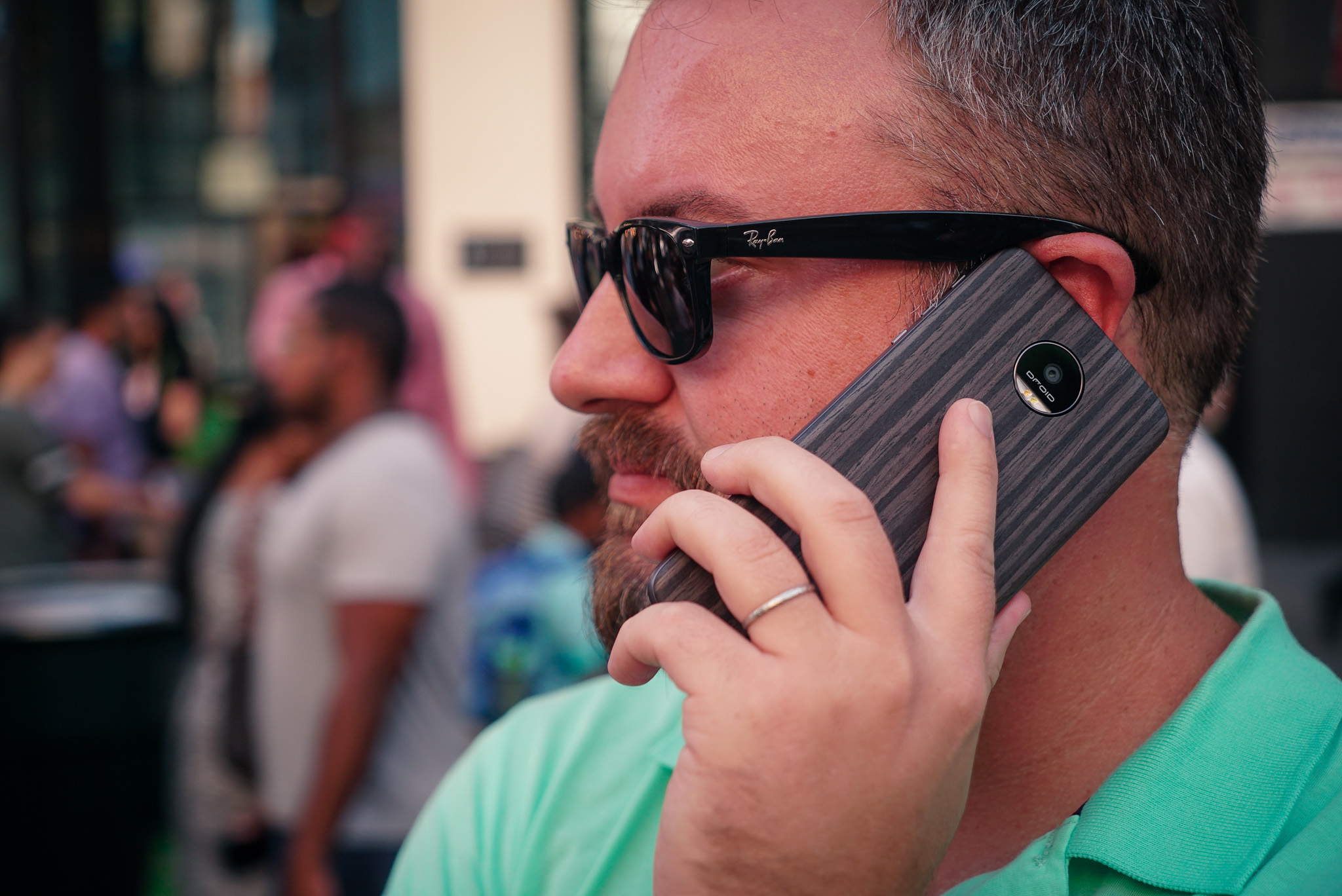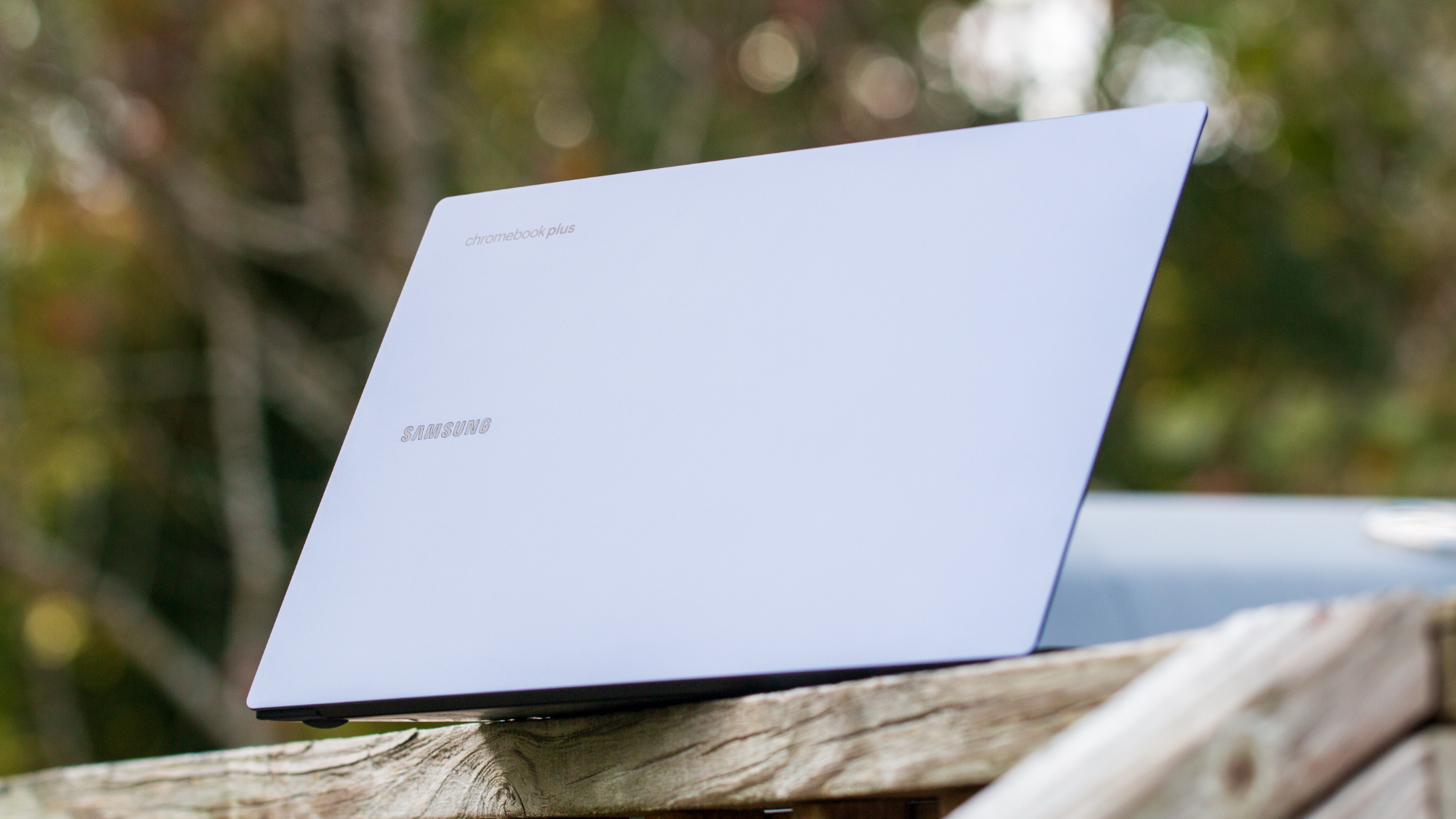The quick take
The Moto Z first comes to us as Verizon's "Droid" models. And ignoring things like Verizon's bloatware and a ridiculous proper name of "Moto Z Droid Edition" and "Moto Z Force Droid Edition," there's a lot to like here. Powerful internals pair with innovative "Moto Mods" — optional accessories that add functionality and are a snap to use, if you'll pardon the pun. All in all in a solid semi-stock experience, though it definitely has less expensive competition.
The Good
- About time Moto has a fingerprint sensor
- Moto Mods implementation is excellent
- Customizable look and feel
- Two options for price, with similar features
The Bad
- Headphone adapter is one more thing to lose
- Fingerprint button scheme takes a little getting used to
- 13MP camera isn't great in low light
- Force model starts to get fairly thick
Moto Z and Moto Z Force Full Review
If there's one thing that Motorola (sorry, but we're going to call it that every now and then — it just rolls off the tongue) has proven over the years, it's that it can build one hell of a phone. In fact, you probably wouldn't be reading this if it weren't for the success of the original Droid smartphone way back in 2009-10.
We've pretty much written that same paragraph in every Motorola review since. But for good reason. Android wouldn't be where it is today with out that first phone.
And the Moto Z of today — which hits Verizon first on July 28 before an larger, unlocked release in a couple more months — very much wouldn't be here without that original phone. And despite all the changes Moto has undergone as a company, one thing remains true: it can make one hell of a smartphone.
So let's get into it. This is our comprehensive review of the Moto Z and Moto Z Force.
Get the latest news from Android Central, your trusted companion in the world of Android
About This Review
We've spent one week with the Verizon Moto Z Droid Edition and Moto Z Force Droid Edition — both review units provided by Verizon and Motorola — which we'll simply refer to as Moto Z and Moto Z Force, because those full names are awful. While reviewing two phones (and in this case their accessories) in the span of a single week is a bit much, the two models share a number of traits. Software, for one. And the Moto Mods, for another. The underlying hardware is mostly the same, as are most physical characteristics. Using one phone isn't largely any different than the other.
The differences show themselves in the details. The phones feel a little different in the hand, with the Force being thicker, though both have the same overall characteristics. The Moto Z Force has a higher-resolution camera, and so we'll be taking a close look at that. Same for battery life.
So with that said: the Moto Z Force was running Android 6.0.1, build MCL24.203-22, with the May 1, 2016 security patch. The only discernible difference in software on the About screen was that the Moto Z baseband was listed as AVS, and the Force was on GVS.
When reading this review, it's helpful to remember that a good bit of what we have here is specific to the Moto Z itself, and not just Verizon's version. The Moto Z Force, with its larger battery and better camera, is a Verizon-exclusive.
Watch this!
Moto Z and Moto Z Force Video Review
By the numbers
Moto Z Specs
The Moto Z and Moto Z Force largely have the same specs. Size, weight and camera resolution are the only real differences. In this specs chart, we're listing the Moto Z first and the Z Force second in places where the specs diverge.
And note that the dimensions are without any of the Moto Mods attached — including the Style Shell, which is the sort of default back that you'll almost certainly be using.
- 5.5-inch AMOLED display
- Quad HD (2560x1440)
- Moto Z Force: extra "ShatterShield" layer
- Moto Z: 13MP camera
- Moto Z Force: 21MP camera
- ƒ/1.8 lens, OIS, laser AF
- Front camera: 5MP, ƒ/1.8 lens, LED flash
- Moto Z: 2600 mAh battery
- Moto Z Force: 3500 mAh battery
- TurboPower fast charger
- Qualcomm Snapdragon 820 processor
- Quad-core 2.2GHz
- 4GB RAM
- 32 or 64GB internal storage
- microSD slot with adoptable storage
Moto Z and Moto Z Force Hardware
The rebirth of Motorola began in 2013 with the Moto X. And while things got a little rocky with its purchase by Google and subsequent sale to Lenovo, this much is clear: Moto (which is how we now refer to the company) is still here. And, in fact, you get the sense with the Moto Z that it's not going anywhere anytime soon. That was a real concern given that that Lenovo is a mostly unknown entity when it comes to smartphones in the United States.
And, in fact, we have two Moto Z phones to worry about. There's the regular Z, and the Moto Z Force. They're essentially the same phone. Same internals, with nearly identical designs. The Force has a larger battery, higher-resolution camera, ShatterShield display and a higher price tag. So you've got options.
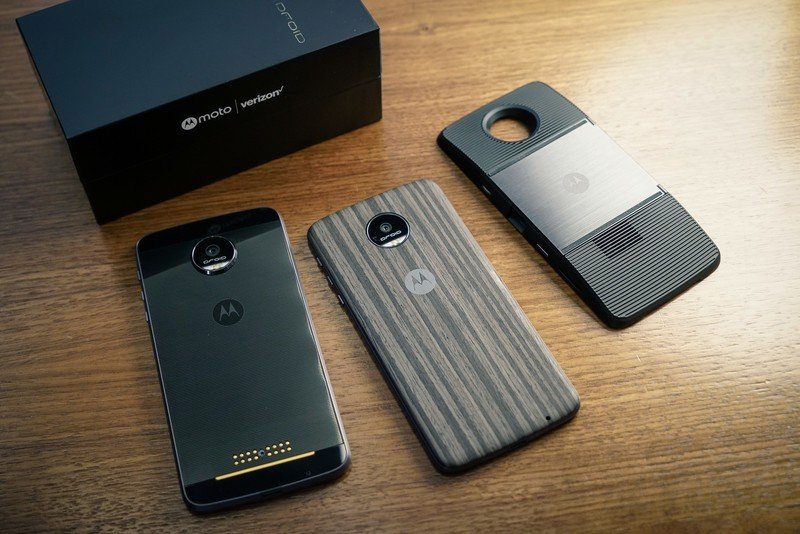
But it's the Moto Mods — the optional accessories that snap to the back of the Moto Z with some seriously strong and useful magnets — that really make this phone something to talk about.
The phones themselves, well, they mostly look like phones, albeit big black slabs with a few distinctive features. The circular camera stack that juts out the back. (Turns out that difference in depth isn't really a big deal, though.) There's the square fingerprint sensor on the front, which actually isn't quite as simple as you might think. And then there's the flat back of the phone itself, with a series of gold contacts that let the Moto Mods do their thing.
The Moto Z is a thin, capable phone. But the Moto Mods are what make it special.
You'll be hearing a lot about how thin these phones are. The Moto Z lists an almost ridiculous depth of 5.19 mm. The Z Force isn't much thicker, at 6.99 mm. But both of those numbers are the phone without any of the backs attached. And to be clear, you can use the Moto Z without so much as a Style Shell — that's the basic removable back that comes in the box with the phone — attached. But I wouldn't do it.
For one, it makes the Moto Z too thin. Or, rather, too thin and too flat. The back of that phone isn't comfortable without some sort of back on it. The Moto Z Force, at just under 7 mm thick naked, feels better in the hand. (It's just a smidge thinner than the Nexus 6P.) But even then I'd use a Style Shell with it at the very least, and for this reason:
The cameras stick out a bit. That's actually not a big deal for me at all in terms of look and feel. Doesn't bother me in the slightest. But things that stick out tend to get beat up, at least when I'm using them.
Need another reason? Fingerprints.
And how about one more: Because these phones are so thin, there's not as much room to dissipate the heat coming off the processor. (Particularly on the Moto Z.) While a Style Shell won't eliminate that, it does help a little. And it's not that the heat is intolerable, it's just noticeable.
So I'm not going to be using the Moto Z in its thinnest form. It's probably either going to be a Style Shell, or one of the battery backs.
Moto Z and Moto Z Force displays
Let's start with the display, since it's the first thing you'll see. It comes in at 5.5 inches diagonal on both models of the phone, and both use AMOLED panels. It's maybe not 1:1 as good as what Samsung has on the Galaxy phones (and some of that could well just be software tuning), but it's still really good, both indoors and out. There's an adaptive brightness option that does a decent job of adjusting things, or you can just opt for the manual slider that's standard in the Android quick settings. (I think I prefer the latter, actually.)
There's also the "Color mode" option, which lets you switch between a "realistic color" palette, or the "Vibrant" option for "enhanced color and saturation," which is on by default. I was fine with the vibrant option and didn't think twice about leaving it there.
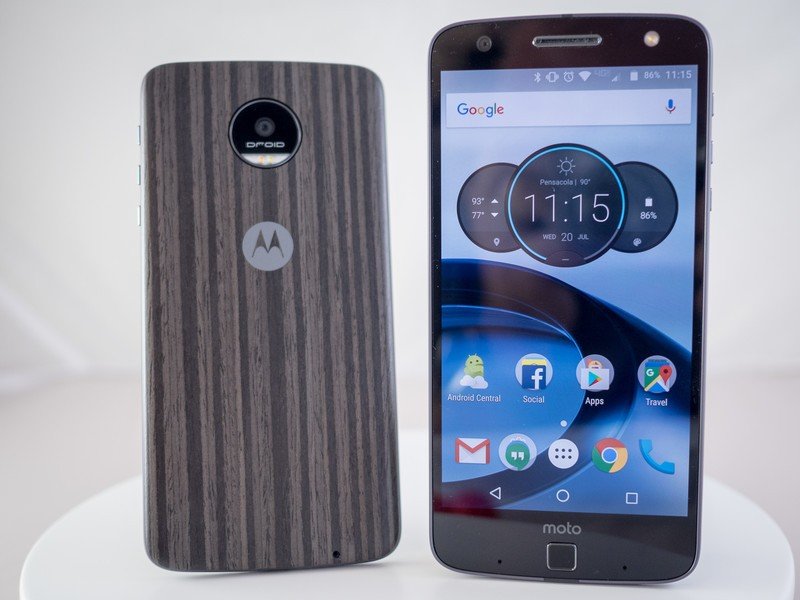
Because this is Moto we're talking about, we've still got the Moto Display options, which will flash notifications on the dark screen while the phone's at rest. It still senses when your hand is coming at the screen and will wake up for that, and you can still set dark hours where the screen won't show a thing. That's standard stuff for Moto these days, and Moto still does it better than anyone.
One setting I would recommend keeping an eye on, however, is the display timeout, or "Sleep" option. By default it's set to two minutes, which is a long time to have the screen fired up after you've quit actually doing anything with the phone. Lower it. Your battery life will thank you.
The Moto Z Force sports Moto's awfully named "ShatterShield" tech. That is, it's got some extra protection over the glass to help keep things from breaking should you drop it. (Do try not to drop your phone, though.) This is the second Moto phone to sport ShatterShield. The first — the Droid Turbo 2 — sported a thick (but replaceable) screen protector that didn't do the display itself any favors. On the Moto Z Force, however, I probably wouldn't have known it's got an extra layer unless someone told me. Occasionally, when the phone gets extra grimy with dust and smudges, I can tell that the display isn't as shallow as most normal phones. But it's obviously been improved in any event.
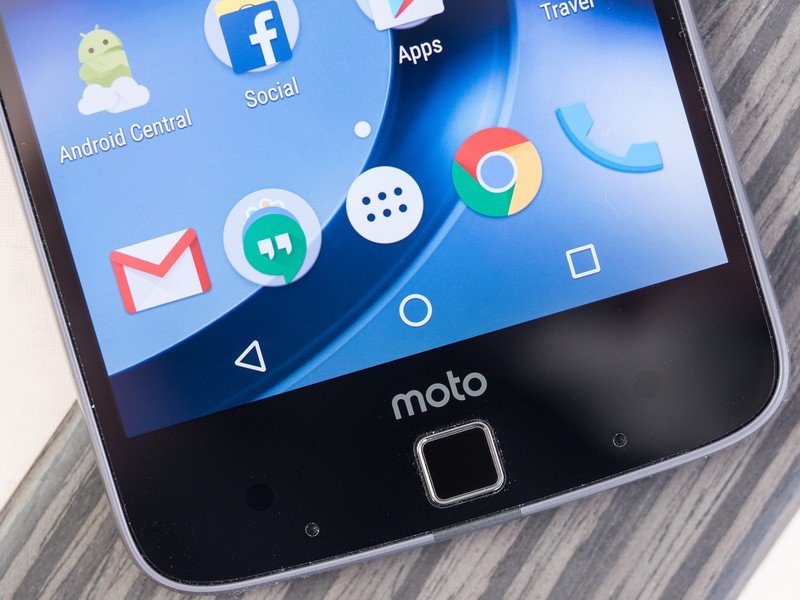
Fingerprint sensor
Finally, we've got a top-end Moto phone with a fingerprint sensor. The Moto Z is using a small squarish sensor below the display and Moto logo. It works quite well, doing all the fingerprinty things you'd expect it to do at this point.
One thing it is not, however, is a home button. In the week that I've been using the Moto Z I've had to retrain my brain to that — mostly due to my having used the the Galaxy S7, HTC 10 and OnePlus 3 a lot in recent weeks. (All three of those phones use front-facing fingerprint sensors that double as home buttons.) Would I prefer to have the fingerprint sensor also serve as a home button, flanked by a couple of capacitive buttons? Maybe. It's not a deal-breaker, though. It's just a little different.
And to add just a little bit more functionality, Moto lets you use the fingerprint sensor to turn the phone off, as well. So you don't have to reach up to the power button (which, while textured, is the same size and shape as the volume buttons and also takes a little retraining of the brain) to turn the phone on and off. In fact, except for the fact that you have to have a proper power button on phones, you actually can get by without ever really using it on the Moto Z.
No headphone jack, no problem (until it's a problem)
Much ink has been spilled over the fact that the Moto Z doesn't have a 3.5 headphone jack. Instead you're left with two options for piping sound directly into your ear holes: Bluetooth, or the included USB-C adapter.

I haven't come to a full conclusion on this one. I've used the adapter. It works fine. I haven't lost the adapter yet, though. And figure the first time I do I'll be dog-cussing this scheme pretty loudly.
But I really think this one is going to come down to personal use case. I've been using the Bose QC35 wireless noise-cancelling cans while traveling with the Moto Z, and I haven't once wanted to plug them in. But I've also used wired earbuds while mowing the lawn. (Because I have some that do passive noise-cancellation pretty well and don't have to worry about whether they're charged.)
At some point I'll have a problem with not having a 3.5mm headphone jack. I'm sure I will. But it just hasn't happened yet. Beginning of the end? May well be.
One question that remains to be answered: How much will spare adapters cost? And how quickly will they be available?
Performance and battery life
At this point, more than halfway through 2016 and through a good number of phones powered by Qualcomm's Snapdragon 820 processor, we have a pretty good point of reference for how the Moto Z should perform. And in a week's worth of us using the phones (which, again, is our minimum for getting a feel for things) we haven't had anything surprising happen.
Performance is as you'd expect in a top-shelf phone these days. Apps load smoothly and don't seem to dump out of memory too quickly, thanks to the 4GB of RAM. (That's never been a problem for me on phones that others have complained about, though.)
Fast charging and a slick battery mod make up for the Moto Z's smaller battery capacity.
Battery life is always the real question mark. We all use our phones in different ways. And the recent popularity of Snapchat and now Pokémon Go mean we're using these things more than ever, and often without thinking about it.
As a refresher: The Moto Z has a 2600 mAh battery. The Moto Z Force has a 3500 mAh battery, or about a 34% larger capacity.
On the Moto Z I found myself wanting to recharge at some point in the afternoon, usually before I left the office for home. For me that's around 12 hours or so of off-charge use before hitting around 25% battery remaining.
On the Moto Z Force, with its greater capacity, I've gone about 15 hours before hitting my 25% limit for recharging.
But like other phones of its ilk, quicker charging means having to top up at some point isn't the chore it used to be. The Moto Z uses Motorola's "TurboPower" system, which is a horribly named version of quick charging. The Moto Z uses a "TurboPower 15" charger and the Moto Z Force ups things to "TurboPower 30" model — those correspond to offering 15W and 30W of power output, respectively.
How fast a phone charges depends on how much it can suck in at once, and how much it actually has to charge. The Moto Z Force, with its higher charge rate and higher capacity, got me 35 percentage points in 15 minutes, from 20% to 55% charged. Another 15 minutes took things up to about 75% charged. The Moto Z saw 22 percentage points gained in 15 minutes (starting at 22 percent remaining), and another 15 minutes took things up to 65 percent charged. (That's about 43 percentage points in 30 minutes, if you don't like doing math.)
So, yeah. I don't mind having to plug in for a few anymore.
What I do continue to mind is the lack of standardization and overbranding of charging these days. A spare TurboPower 15 charger runs $34 from Motorola's website. If you have a current Quick Charge-compatible charger you're probably OK. (I've had a few here that show up as "TurboPower.") Maybe one day this will all sort itself out. But for now, there's TurboPower™!!!

Options that work
Moto Mods
Now for the exciting part of the Moto Z — the Moto Mods. These are the accessories that magnetically attach themselves to the back of the Moto Z. It's a simple matter of letting them snap together (thanks, magnets!), then letting the software do its thing for a couple seconds. That's really all there is to it.
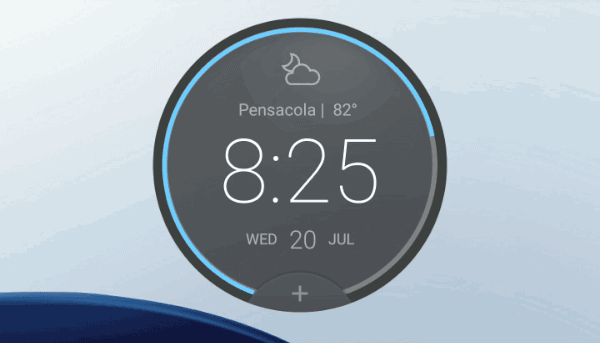
And these aren't just dumb accessories. They talk back and forth to the phone. The main Moto widget on the home screen is called the Command Center, and it'll show you the battery status of whatever mod is attached. A persistent notification also gives access to more options and information.
At launch, there are three Moto Mods. (Well, four if you count the Moto Style Shell — the customizable backs that you can get starting at $14.99.) There may well be more. We hesitate to say there will be more Moto Mods because we've already had one manufacturer try that line on us this year, with nothing to be seen for it. But we've got more faith in Moto's implementation at this point.
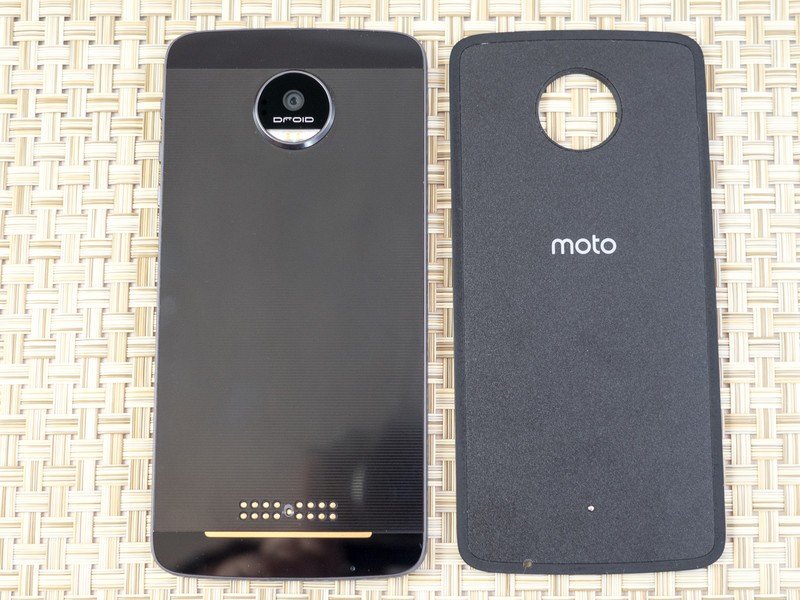
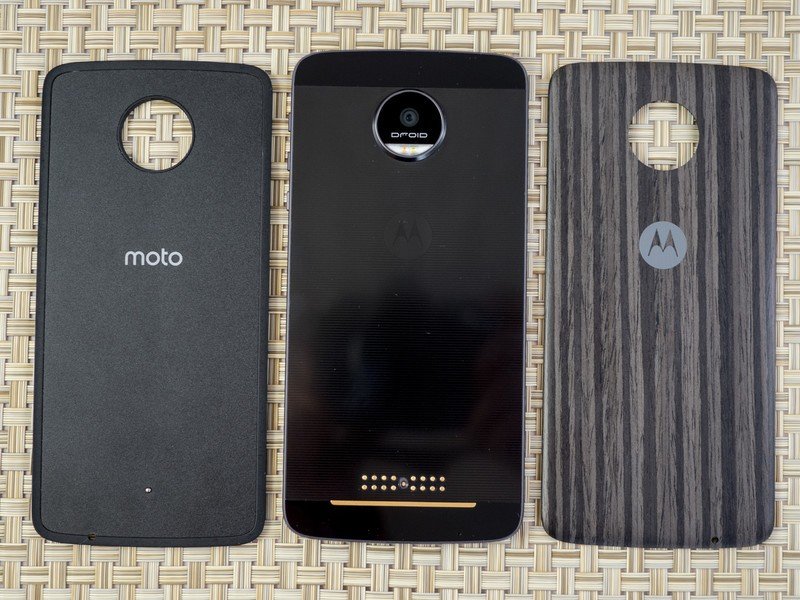

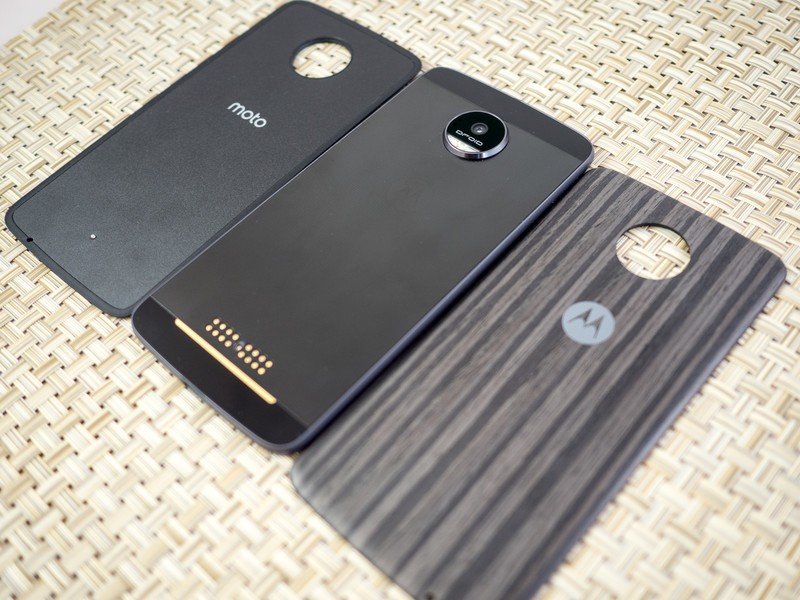
JBL SoundBoost speaker
If you're looking for a way to carry around an external speaker without really carrying around an external speaker, this one's pretty darn good. It snaps on the back of the Moto Z, does a quick software dance, and then — it just works.
This thing's got 6W total (three per speaker). It's surprisingly loud, and good enough in quality for the sort of casual listening you'll be doing with this kind of accessory.
It's not small, however. It adds 13mm of thickness to the phone. It's got that sort of extended battery shape to it, so it's still pocketable. But it's also heavy at 145g — basically double the Moto Z in the first place — due in no small part thanks to the 1000 mAh battery that's tucked inside there. This Mod can be charged separate from the phone.
It also isn't terribly expensive at $79. Basically I'd look at this like a Bluetooth speaker that's easier to use (there's virtually no connection process), and easier to carry around. It's plenty loud — I actually had to turn it down while sitting outside in Herald Square in New York City.
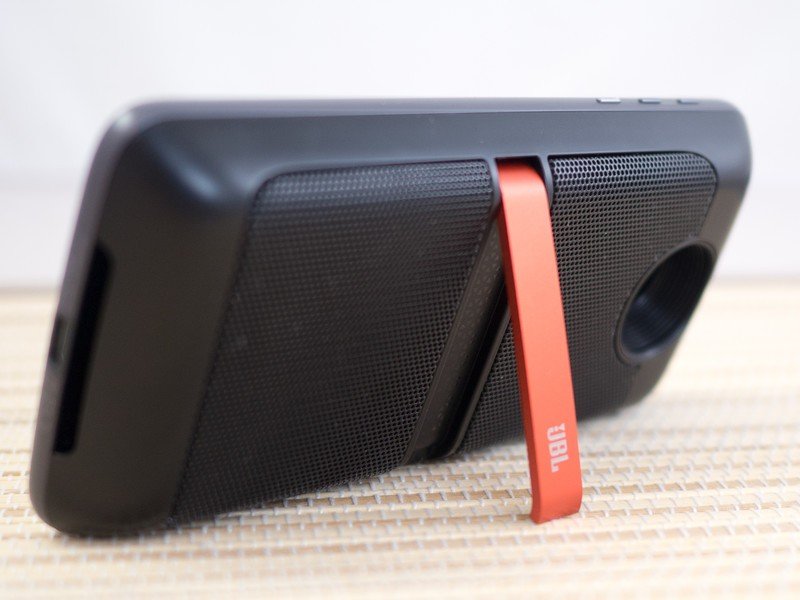



Moto Insta-Share Projector
This isn't an inexpensive MotoMod, at $299. And this sort of accessory generally isn't cheap. But It's very easy to use in this case. Just attach it to the phone, approve a couple permissions, and you're good to go. There's a power button for the projector itself, and a focus wheel to make sure things are in focus. And that's pretty much it. Find yourself a level spot to rest the phone, do a little tweaking to the angle — do a little more tweaking to the angle, because it's pretty damn sensitive, even with the keystone correction — and you're good to go.
This is not the world's greatest cinema experience. Your choice of wall or screen or whatever makes a big difference. The 480p resolution is, well, 480p. The 400:1 contrast ratio isn't going to pique much interest. You're probably going to want to use a Bluetooth speaker if audio is of any real importance. (Especially if you're also going to want to have things charging during playback, because of that whole headphone jack thing. And the internal fan is noticeable.)

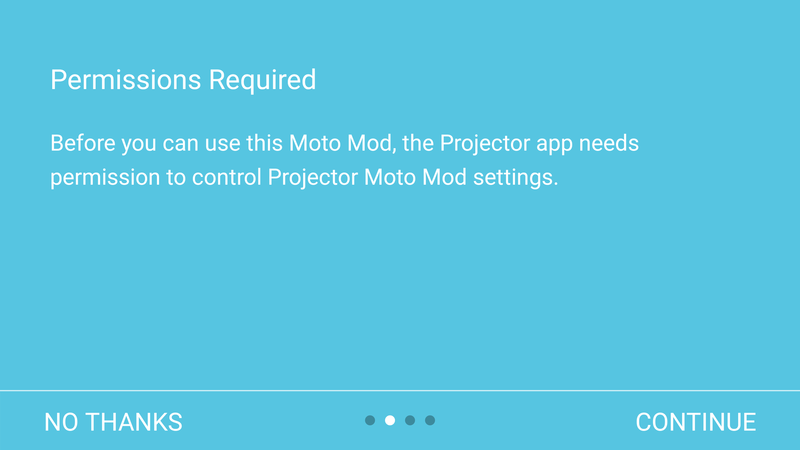
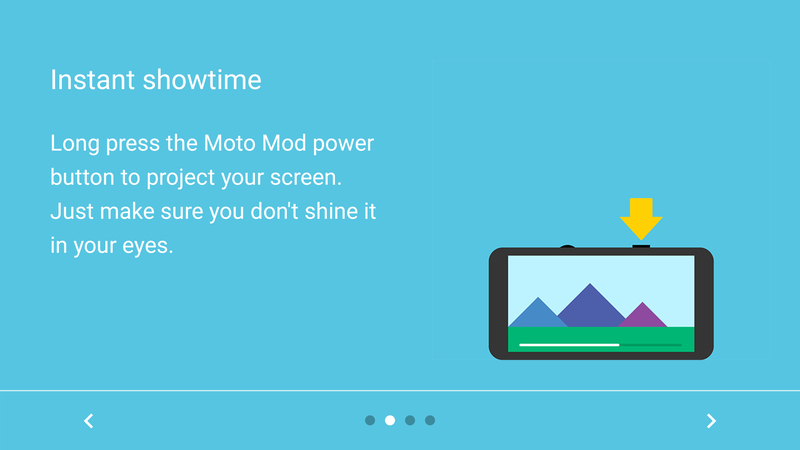


This is a novelty for kids. Mine got a kick out of watching Harry Potter on the wall. (Pro tip: Purple walls make for purple-tinted Potters.) But it's not going to take over for a similarly priced television anytime soon.
Where I could see this making inroads is with the business set. I could see road warriors expensing this in a heartbeat. Need to give a presentation any time, anywhere? This Mod has you covered.
It's also a hefty accessory, adding 11mm of thickness and 125g of weight, with a built-in 1100 mAh battery. (It also can be charged separate from the phone.)
This projector is fun. But I can think of other ways I'd like to spend $300.

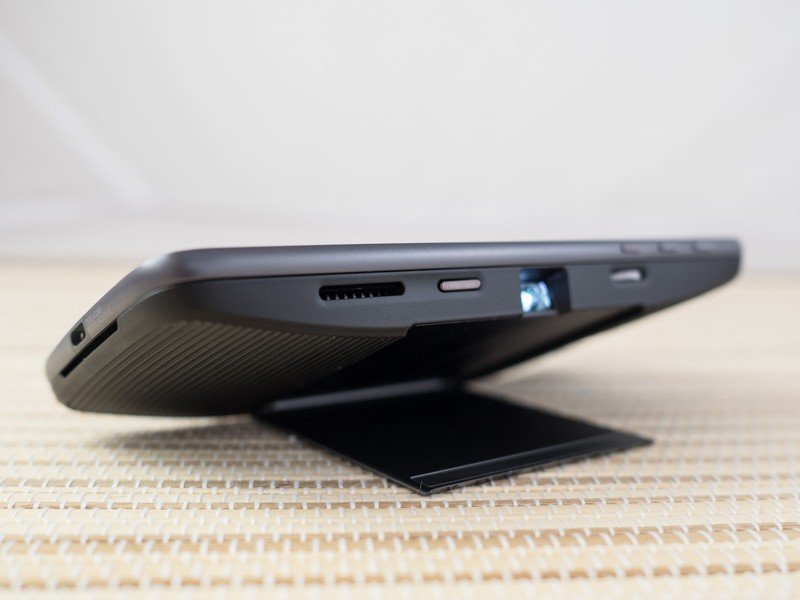
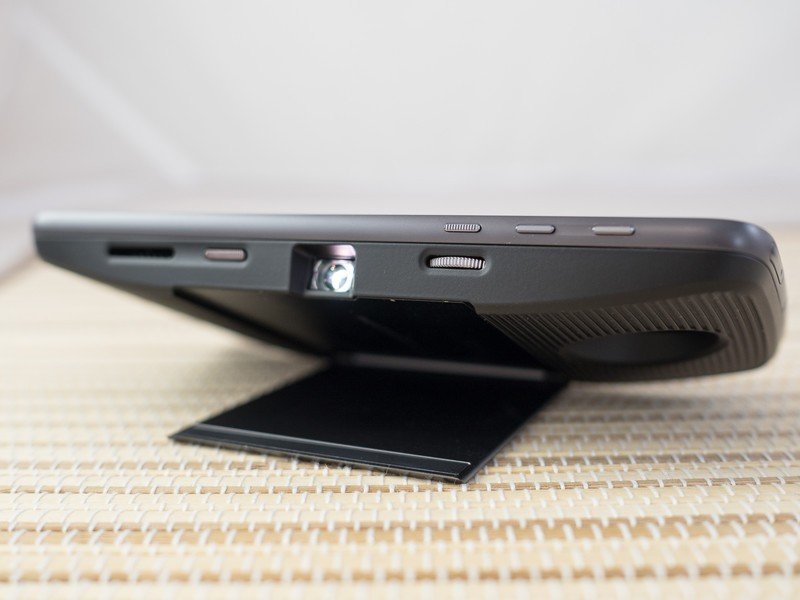
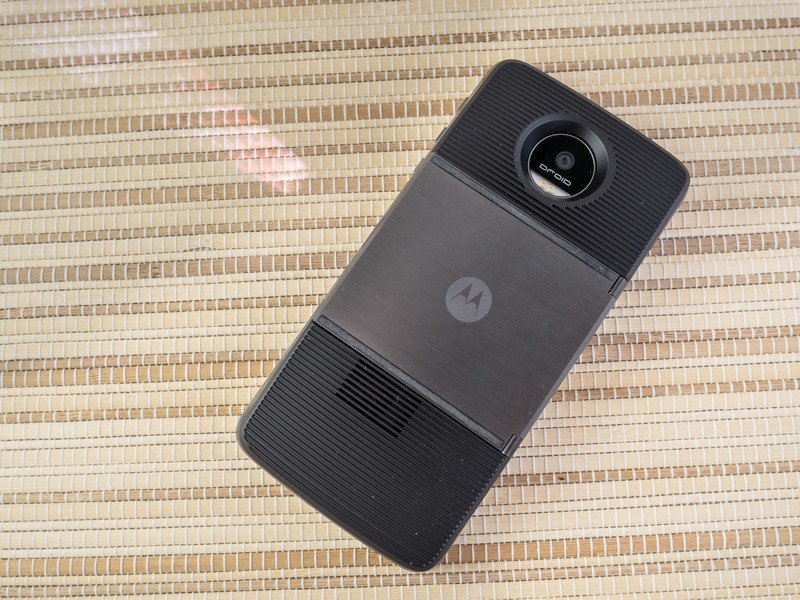
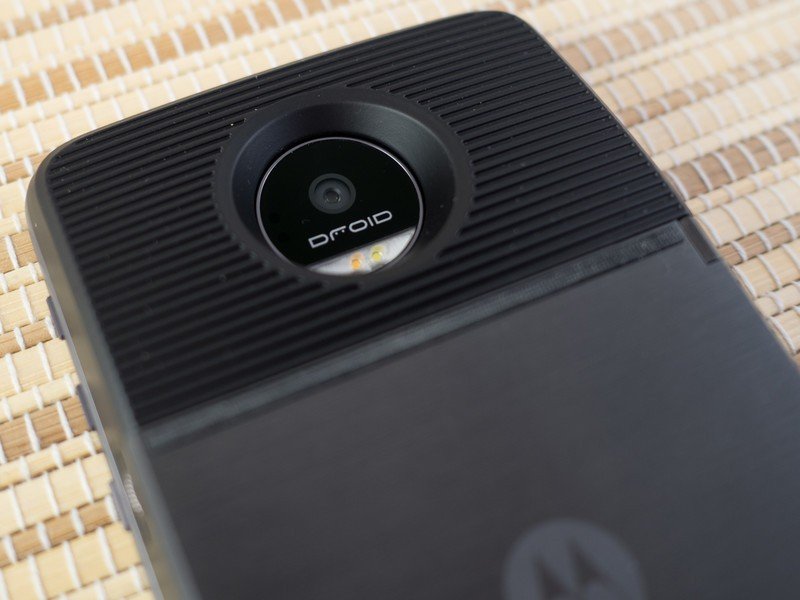
Incipio Power Pack
This one's almost a must-buy. And you've got options. Motorola and Verizon gave us a 2200 mAh TUMI-branded battery to check out. There also are Kate Spate options, and others that will allow for wireless charging. They start at $59 and run up to $89.
Again, it just pops on, and it starts working. By default the external battery charges the phone all the way, and keeps it there, then the phone battery kicks in once that's depleted. But there's also a "Battery efficiency mode" that keeps the phone charged to 80% and "improves Moto Mod battery performance." Pick your poison.
This battery Mod adds about 6 mm of thickness to the phone — making it feel like something with a fairly standard extended battery, if you've ever used one before. The TUMI battery I have here weighs about 84g. Moto says the wireless charging Mods will weigh 85g. (But some of these specs have been off a bit.)
In any event, I'd buy one of these on Day 1. On the trip home from the Verizon-Moto event where I picked up these review units I realized I'd forgotten to bring an external battery. No matter. This TUMI battery got me about six hours of hard road use before being depleted. And when it was, I just popped it off and stashed it in my bag, returning the phone to its more svelte status. That's well worth the extra cash.
My only wish here? That like the projector and speaker you could charge the battery back separately. The TUMI we've reviewed here has to be attached to the phone to charge.

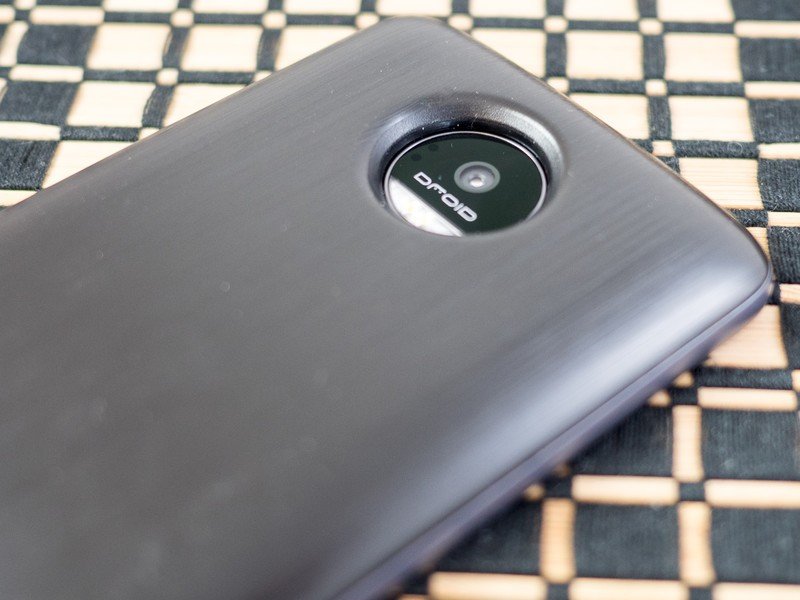
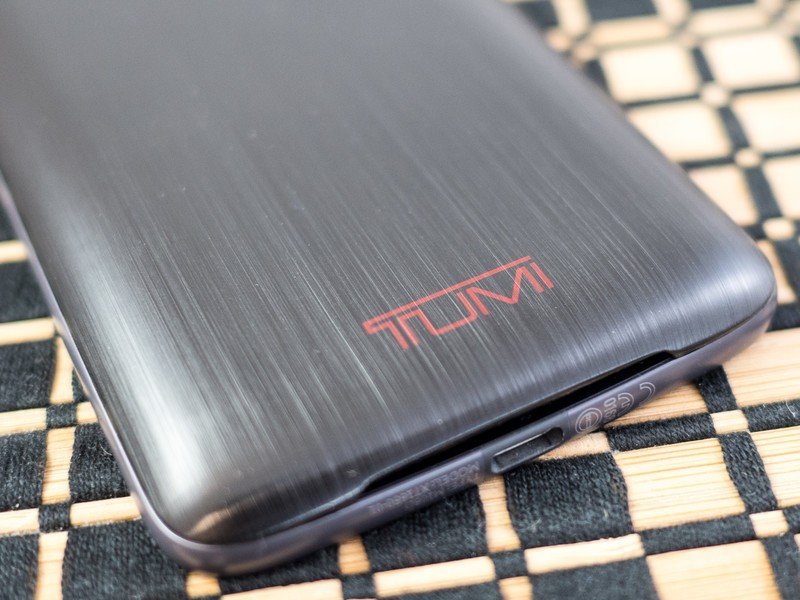
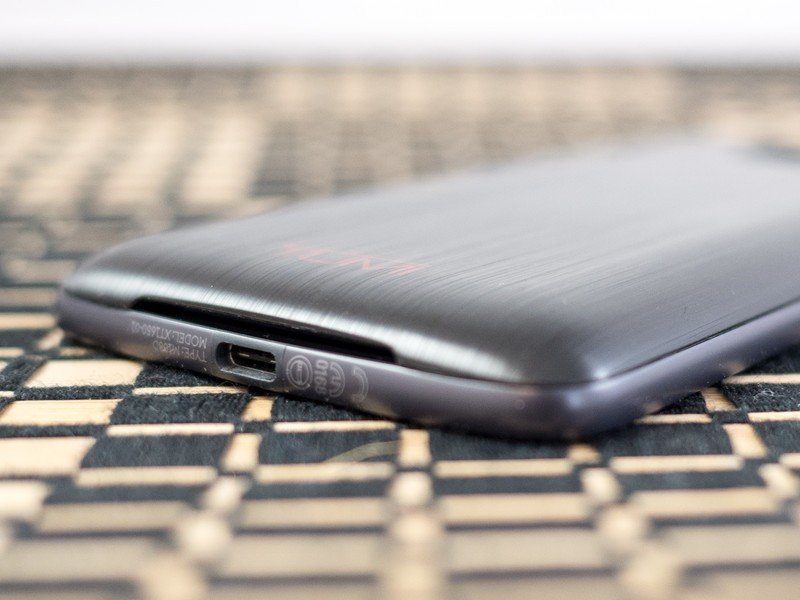
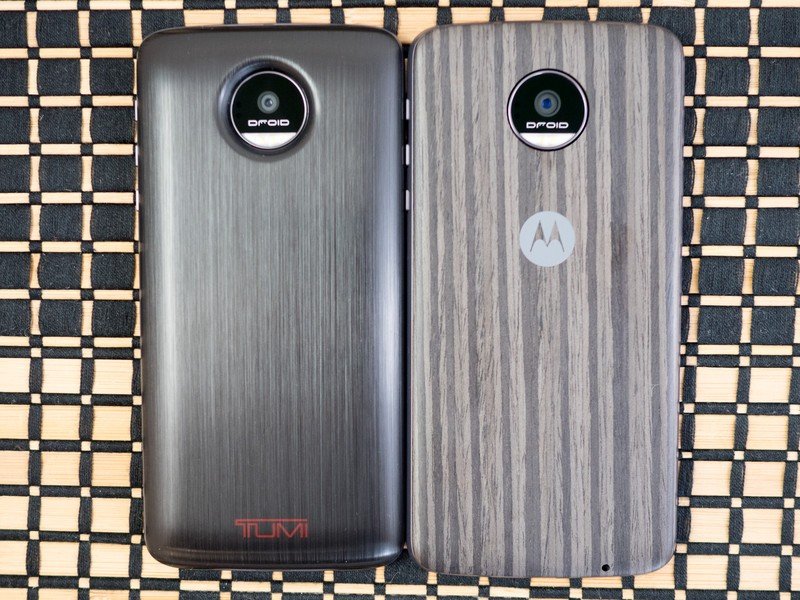
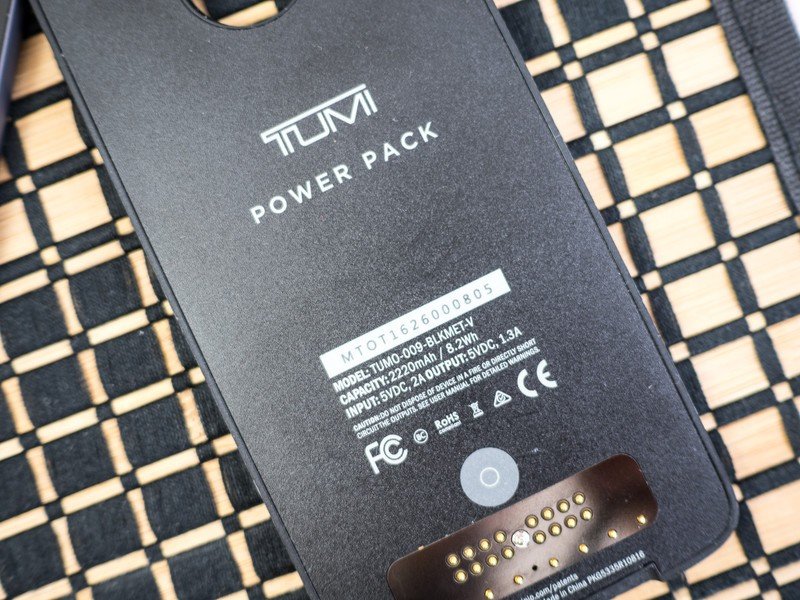
Or make your own Moto Mod
Where things get really interesting is that anyone can make their own Moto Mod through the Moto Mods Development Kit, or MDK.
The gist is that a developer will get a special back that accepts a perforated board — or a HAT adapter board that works with the Raspberry Pi. And Moto has "Personality Cards" that serve as a bit of a starter project, showing devs how to work with audio, or batteries, or displays (using the Moto 360 display, of course), or sensor hubs.
It's very cool. It's very nerdy.
I have absolutely no idea if we'll ever see a commercial release of something born in someone's garage.

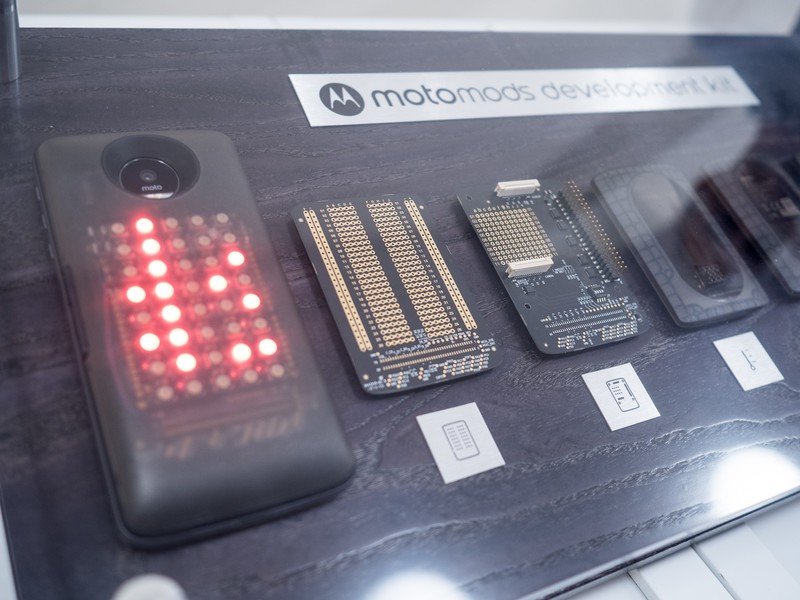
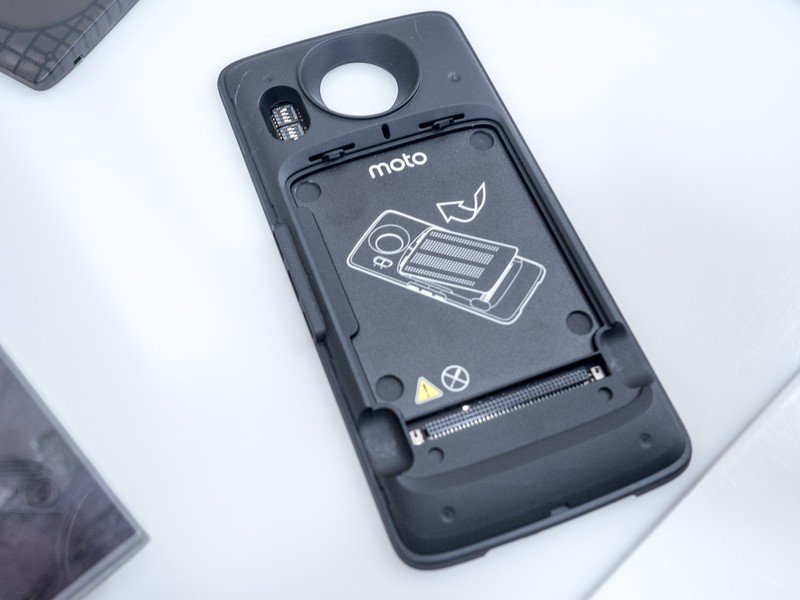

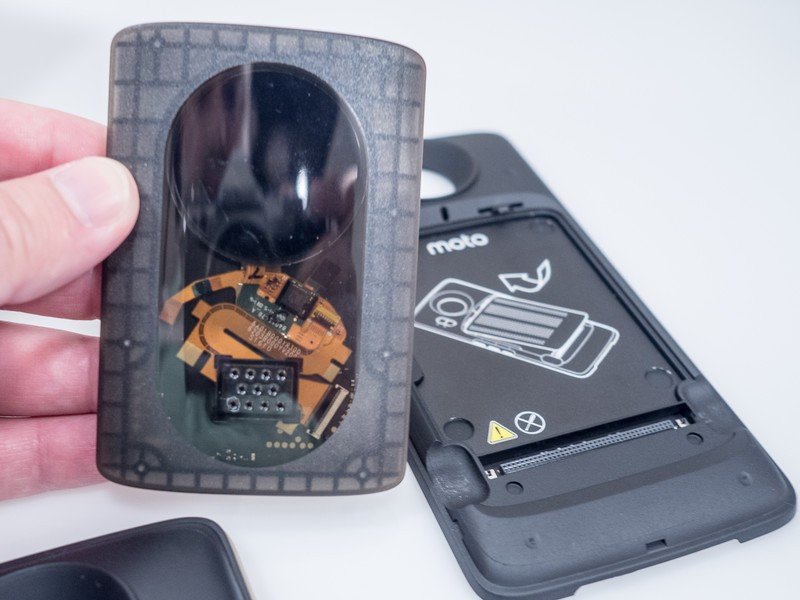
More on the MotoMod Developer Kit
The future of Moto Mods
The big question we had earlier in 2016 when LG unleashed its own modular scheme was what this sort of investment meant for the future. Phone manufacturers tend to shift course fairly frequently, and without warning. (LG in particular does that.)
But from initial announcement of the Moto Z and Moto Mods, we've been told that a Moto Mod you buy today will work on the next Moto Z. So as long as that remains true, you're not spending extra money on something you'd have to throw away should you buy the next Moto Z. (That obviously goes out the window if you buy any other phone.)
That also give us some clue as to the direction a future phone would take, design-wise. But it's a smart and important statement from Moto when you're considering purchasing any of this.
Actions speak louder than words, of course. We'll be watching this one right along with everyone else.

How to update a Moto Mod
These Moto Mods are smart accessories. They talk to a co-processor on the Moto Z itself, and they work together to get things done. It's impressive as hell just how seamless the process of using one is. There's nearly no work on the user's part.
And these Mods can get smarter. Moto has an in-place update system at the ready. If you can update an app, you can update a Moto Mod.
Here's how you update a Moto Mod
Stock-ish
Moto Z and Moto Z Force Software
The Moto Z and Moto Z Force essentially run the same software. It's not identical (figure at the code level something's changed for the higher resolution camera on the Force) but, there's no noticeable difference between the two.
So we've got a relatively stock build of Android 6.0.1 Marshmallow, even with customizations from Moto and Verizon. Google's apps are front and center, including Google Keyboard and the Google Launcher.
On the Moto front, the most obvious addition is the Command Center widget. It first and foremost is a clock and weather widget, plus (somewhat redundant) battery indicator. Attach a Moto Mod, and you'll see both the phone's battery level, and the battery on the Moto Mod. If you have an alarm set, that'll show there, too. That's handy.
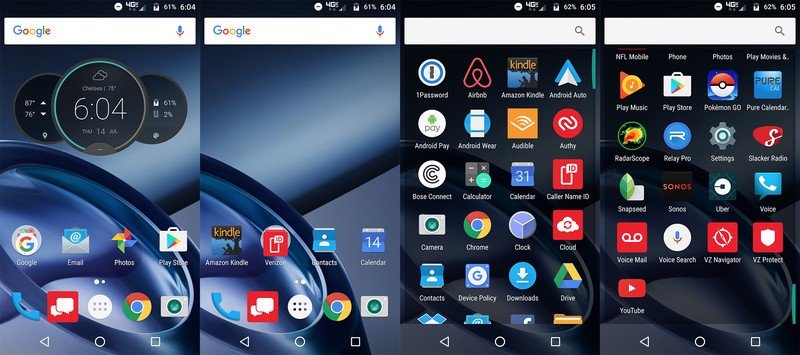
The standard Moto customizations we've long enjoyed are all here, of course. Moto Voice lets you bark commands at your phone all day long. Moto Display gives you some seriously useful info on your screen, when you want it. And Moto Actions let you use gestures as shortcuts.
But for as good as Moto's custom actions are, none of them is terribly revolutionary anymore. And it works so well that there's really not that much to say at this point. Take some time and explore the Moto app on the Moto Z if it's your first time with a recent Moto phone. There's a whole lot there that can make using a phone easier and more enjoyable. But they just don't have that "Wow!" factor that they did a couple years ago. That doesn't mean they're not good, though. They are. Very good.
Unfortunately, Verizon's software load on these Droid phones (remember that what you're about to read won't be included on the unlocked Moto Z later this year) is completely predictable as well. There's plenty of bloatware, from Amazon Kindle to Audible and Hotels.com and NFL Mobile, as well as Slacker Radio. Plus there's VZ Protect, and VZ Navigator, and Voice Mail, and My Verizon, and Message+, and Verizon Cloud, and Caller Name ID. The Verizon apps can be disabled. Some of the other bloatware can be completely uninstalled. (And I had even more bloatware games installed on the Moto Z, than on the Force. Go figure.)
Moto did good on the software. Verizon did what Verizon could to clunk it up. Same as it ever was.
Update July 26, 2016: There's been a bit of back-and-forth over whether the Moto Z would receive monthly security updates. While Motorola told us the Moto Z would receive security patches, it didn't say when. Ars Technica has confirmed that security updates will be rolled into other maintenance releases and not issued as standalone monthly over-the-air-updates. While that's not quite a disqualifier — Moto would hardly be the only company to not serve security updates every month — it's still something to keep in mind when considering this phone.
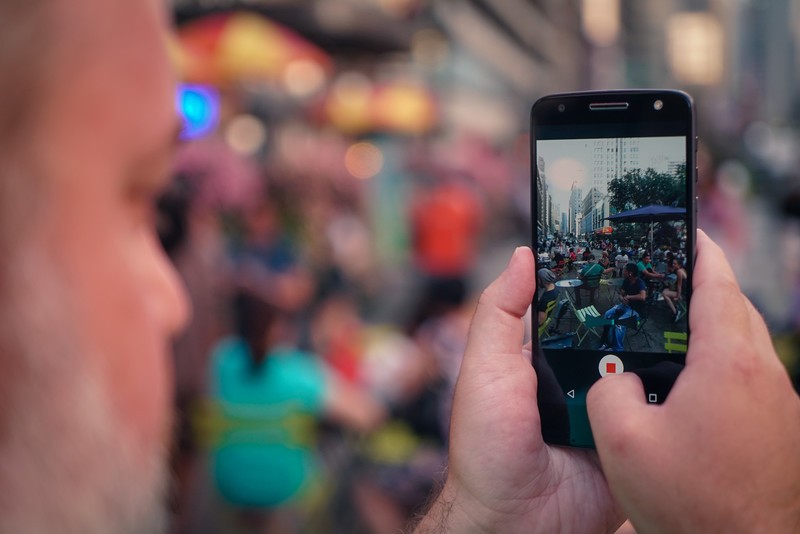
Shoot it real good
Moto Z and Moto Z Force Cameras
Two phones, two sets of cameras. The standard Moto Z sports a 13-megapixel rear camera with OIS and an f/1.8 aperture. The Moto Z Force (and, again as of this writing it's a Verizon exclusive) takes things up to 21 megapixels. Both phones from 5-megapixel front-facing cameras.
These cameras will do just fine during daylight hours. At night? It's dicey.
My favorite part of Motorola's cameras continues to be how you launch them. That double-wrist twist thing remains excellent and saves me a 1x1 space on my home screen. (Moto and Samsung are the only manufacturers that actually get me to remove an app from my home screen.) Once the app is open, you'll notice how it's pretty sparse. There's not a lot of chrome to get in the way, and that's a good thing. Options are just a swipe away, and the mode selector is the bottom corner.
One thing to note is that the cameras by default aren't shooting at their highest resolution. Instead, Moto (as many manufacturers do) has opted for a lower-resolution 16x9 aspect ratio. It's your call as to whether you want to change that up.
Regardless, the cameras are plenty capable in daylight. They're not the best out there. Samsung still rules that roost. But when the sun's up and you're just sharing to the usual social places, it should serve you just fine. At night? Well, I ran into trouble anytime there was artificial lighting and I was shooting in Auto mode. Hitting up the full-manual Pro mode can help with that if you're so inclined. (I, generally, don't bother.)
Proof's in the pudding, of course. Let's take a look.
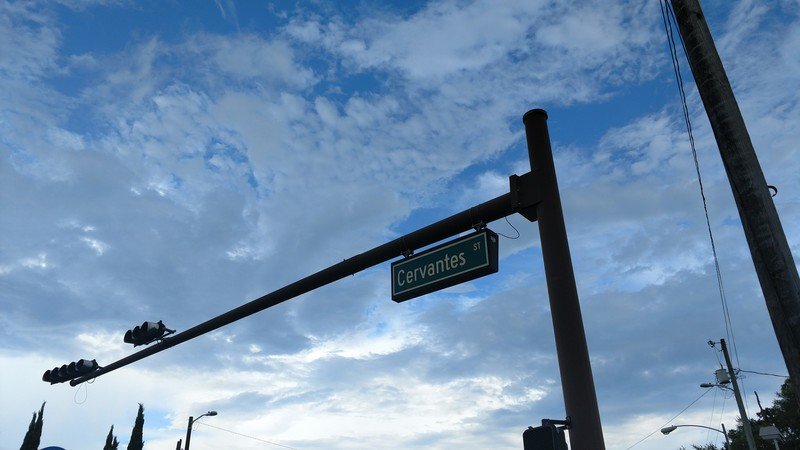

















The bottom line
Should you buy the Moto Z? Yes, but ...
These are really good phones. The question is whether the mods are worth it for you.
On its own, the Moto Z (and the Moto Z Force as well) is a very capable phone. But it's a capable phone in a sea of capable phones these days. The question you're going to have to ask yourself is how much the Moto Mods mean to you.
And to be clear: Moto has nailed Moto Mods. The implementation is brilliant. They're as simple as they could be, and I've yet to run into an instance where they didn't work as advertised. Style Shells are a relatively inexpensive way to customize the look and feel of your phone. (At the expense of MotoMaker, though. RIP.) The JBL SoundBoost speaker sounds pretty good and is easy to carry around. The Incipio Power Packs add a good bit of juice to your phone, without the hideousness of most external batteries. The Insta-Share Projector is fun and useful, albeit not cheap.

But one thing I keep coming back to with the speaker and extended battery is that instead of a Bluetooth speaker and external battery with a charging cable, you've got two accessories that only work with the Moto Z, and not with virtually every other device out there.
The phone's are priced on Verizon about how you'd expect — $624 for the Moto Z, and $720 for the Moto Z Force. (We don't yet know unlocked pricing.) But that total cost starts to go up significantly when you start adding in Moto Mods. (Though monthly payments do lessen that blow.)
And there's the rub. How badly do you want these Moto Mods? If you're not already madly in love with the Moto Z and have your mind set on it, are the Mods enough to sway you — and to get you to open your wallet? If so, congrats. You'll be buying yourself a very good Android smartphone.
